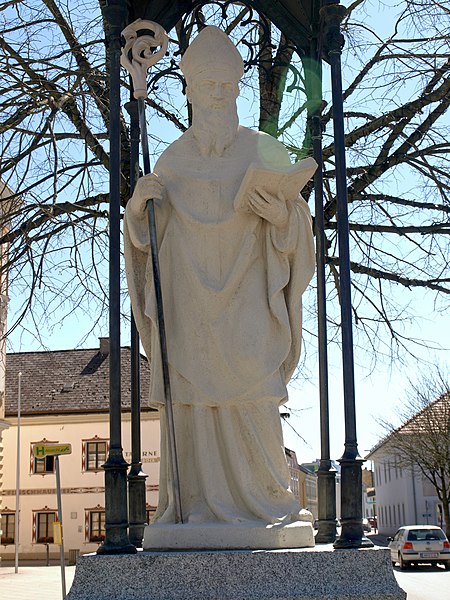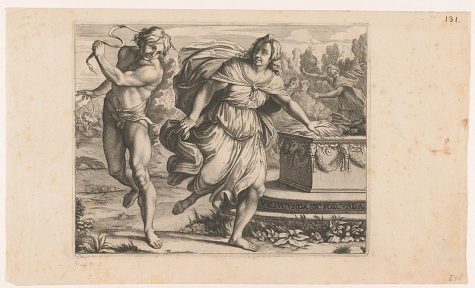Valentine’s Day: A Very Weird History

OLYMPUS DIGITAL CAMERA
February 22, 2021
An overview of the supposed origins of Valentine’s Day- How it came to be
Valentine’s Day is a holiday that we all know, whether we love it or not. For some, it’s the day of elementary school sugar highs and punny cards, whereas others may use it as a serious means to express their feelings for another. But did it start out this way? It’s hard to say, as the true origins of the commercial holiday we now know are vastly muddled and filled with speculation. However, there are a few common threads throughout the speculation. It involves a Saint (or maybe a few), a (rather disturbing) pagan festival, and a poet. Oh, and bird-mating season. It’s all very weird.
Saint Valentine
The legend of Saint Valentine is unclear, as the Catholic Church recognizes three Saints, all of whom shared a name and were martyred. However, there are multiple tales surrounding this figure (or figures). One is that in third century Rome, Emperor Claudius II outlawed marriage for young men. Valentine proclaimed this to be unjust, and so he decided to marry young couples in secret, causing him to be put in jail and eventually beheaded by Claudius II on February 14. There’s even a legend that this man fell in love with one of the jail keeper’s daughters while he was imprisoned, sending her a note that said “From your Valentine”. However, some contend that this man was not the St. Valentine, as another Saint Valentine of Terni, a bishop, was beheaded by Claudius II on February 14 as well. But then again, some say it is likely that these two figures were one in the same, with simply two versions of one Saint’s legend.
This “St. Valentine” was supposedly a sympathetic romantic; however, there is essentially no evidence to back that up. At the end of the day, there is so much mystery shrouded around this Saint that practically all we know is this: There was at least one St. Valentine who died a martyr, and he was honored by the Catholic Church with the celebration of St. Valentine’s Day on February 14.

Lupercalia
Simply put, Lupercalia was a pagan festival that was annually celebrated in ancient Rome on February 15. This celebration was meant to ward off evil spirits and infertility, and involved a lot of blood. Basically, a goat and dog were sacrificed, with their bloody animal hides turned into long strips called thongs. Half-naked (and often drunken) young men would then run around whipping women with these bloody thongs. Surprisingly, this violent act was much welcomed, as it supposedly promoted fertility and healthy babies. Women would even line up to get whipped. The festival also involved a lottery in which young men and women would be randomly paired together for a period of time, often resulting in marriage.
However, the pagan tradition supposedly came to an end when Pope Gelasius came along in 496 A.D., denouncing the rowdy festival. Here’s where St. Valentine’s Day comes in. There is (yet again) essentially no concrete evidence for this, but Pope Gelasius is said to have purposely replaced Lupercalia with the celebration of the martyred St. Valentine, or any other Christian celebration, really. (His goal was to expel all pagan rituals and replace them with Christian ones.) Despite this replacement, the pagan festival didn’t end up changing that much. It was still a day of fertility and love, albeit not quite as naked and bloody as it had traditionally been. So, although this new St. Valentine’s Day was a Christian celebration by name, it still supposedly had its roots with Lupercalia, the bloody ancient Roman festival of fertility. But again, this is all speculation, and the lines here are extremely muddy.
Chaucer’s Influence
Before Chaucer, this holiday wasn’t all that “lovey-dovey” yet. But after the poet’s release of “Parlement of Foules”, things slowly began to connect more and more to love. He wrote: “For this was on sent Volantynys day. Whan euery bryd comyth there to chese his make.” Apparently when Chaucer was around, February was the season of bird-mating in England, the time when English birds would pair off to go produce their eggs together. As a result of this connection, European nobility started to send love letters during this season of “lovebirds”, and the idea of mating in February became conventional. Shakespeare soon romanticized St. Valentine’s day in his work as well, causing more and more people to catch on.
As time went on, hand-made cards started appearing, then factory-made ones, as the Industrial Revolution took place, and eventually, Hallmark began mass-producing the cards we all know and love (well, kind of) in 1913. At some point, chocolate companies like Cadbury and Hershey’s saw the opportunity for business, one thing led to another, and here we are. All of these heart-shaped boxes of chocolates, roses, decorated windows, and sappy cards… It’s all because of a martyred Saint, a bloody pagan-turned-Christian festival, and a poet writing about some birds. A very weird history indeed.










